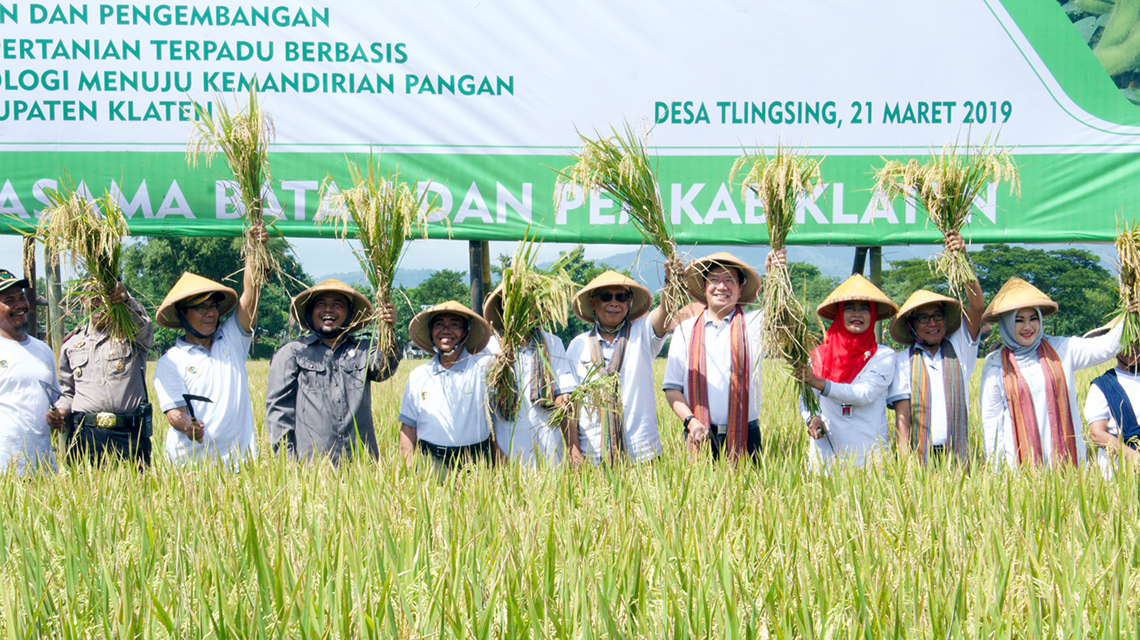Growing more rice around the country
Three of BATAN’s 23 new rice varieties, for example, are now being widely cultivated in different regions around the country. Known as Bestari, Inpari Sidenuk, and Mustaban, these rice plants were selected because they can produce, on average, more than 150% more rice in a shorter time than other local varieties. They are also more resistant to changes in the climate as well as diseases and insects.
‘’In my area, the planthopper insect is everywhere, and when I saw these good Mustaban plants, I thanked God the planthopper does not affect it,” said Hamid, a seed breeder from the Pontang area in Serang in Banten province. Nearby in Kaseman village, another seed grower, Tatang, also added: “We did not have to use insecticides. Once the flowers from our Mustaban plants came out, there were no rice stink bugs to be found, but the plant needs to be shorter.”
Experts at BATAN plan to continue research and development to expand the number of new plant varieties and to incorporate farmers’ feedback to further refine and improve how the plants perform. The research will also be geared toward optimizing how plants grow using local agricultural practices, such as fertilizer systems, and under different environmental conditions, such as local soils, strong winds and heavy rains.
“Sustaining agricultural production has never been more challenging than today as water scarcity, soil erosion, land degradation and crop failures keep amplifying,” said Qu Liang, Director of the Joint FAO/IAEA Division during a visit to Indonesia in March 2019. “Climate-smart agriculture through effective plant mutation breeding programmes like Indonesia’s is an important part of building a sustainable future.”

